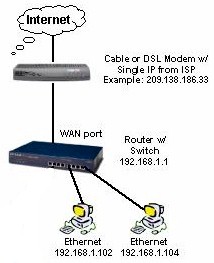Hardware Router Need To Know 2006
Everyone with a high-speed Internet connection needs a router. So why not learn how to choose the one that best meets your needs? We've updated and expanded our classic Hardware Router Need To Know to help you do just that!
Introduction
It's been a little over four years since our first Hardware Router Need to Know and while a lot has changed, a lot has stayed the same. On the change side, prices have come down to the point where there's no excuse for not having a router if you have a broadband connection. You can even find some products in "blister-pack" form hanging near checkout lanes to encourage impulse buying. And while some vendors like UMax and Nexland have left the business, there have been plenty of new entrants such as Trendnet, Zonet, CNet (is there a trend here?) to take their places.
On the "stay the same" side, router buyers are still plauged by routers that frequently drop connection, reboot mysteriously, overheat and generally make owners regret their purchase. Official vendor support is still a hit-or-miss proposition, with many users taking their problems to fellow users in online forums, rather than endure hour-long waits to end up speaking with someone who is barely understandable.
In spite of these hassles, there is still no better way to share a broadband (or even dialup) Internet connection than by using a hardware router. Today's consumer-grade routers continue to provide a lot of bang for the buck, and both enable more than one computer to use a single Internet connection, while protecting those computers from some of the dangers of a full-time direct Internet connection.
This article will help you understand the features of these beasties, untangle some of the confusing terminology that some manufacturers use, and figure out what the "must-have" features are for your situation.
Let's get started!
Join our discussion on this topic
Get instant access to breaking news, the hottest reviews, great deals and helpful tips.

Tom's Guide upgrades your life by helping you decide what products to buy, finding the best deals and showing you how to get the most out of them and solving problems as they arise. Tom's Guide is here to help you accomplish your goals, find great products without the hassle, get the best deals, discover things others don’t want you to know and save time when problems arise. Visit the About Tom's Guide page for more information and to find out how we test products.


